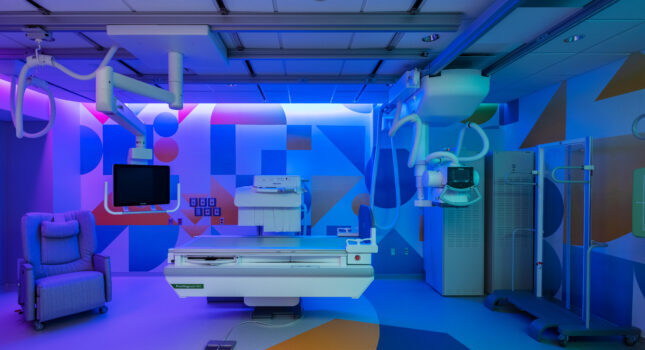The adoption of automation and smart technologies in healthcare facilities is transforming project work, but challenges persist because of data security concerns and HIPAA compliance.

Automation insights
- Automation in healthcare facilities has extended beyond traditional HVAC and plumbing systems to include preventive maintenance of electrical systems.
- While the demand for smart technology in hospitals is rising, concerns over data security and HIPAA compliance create challenges for comprehensive connectivity.

Respondents:
- John Blanton, PE, Senior Mechanical Engineer, Certus, Dallas, Texas
- Brian Evan, PE, Associate, Wold Architects & Engineers, Saint Paul, Minnesota
- Kristie J. Tiller, PE, LEED, AP, Associate, Director of Mechanical Engineering, Lockwood, Andrews and Newnam Inc., Dallas, Texas
- Tim Willoughby, PE, Mechanical Engineering Principal, HDR, Omaha, Nebraska
John Blanton passed away unexpectedly shortly after responding to these questions. John’s legacy will continue to positively impact those he worked with and our industry for many years to come.
From your experience, what systems within hospitals, health care facilities and medical campus projects are benefiting from automation that previously might not have been?
John Blanton: We’ve been automating most heating, ventilation and air conditioning (HVAC) and plumbing systems for a long time. To do so we’ve been controlling how they operate in conjunction with each other and within the facility to optimize performance and have been using trends for preventive maintenance. However, electrical system preventive maintenance, such as annual thermographic scanning of electrical connections, is traditionally done manually. The thermal scans help identify any potential faulty or loose connection points and must be done while electrical equipment is energized, which poses a safety risk to the technician and is challenging in a 24/7 health care application. We are now able to add built in temperature sensors directly onto the busbars of the equipment that continuously monitor and transmit the connection health to a building automation system. When an abnormal temperature rise in conductors is detected, it will alert the operator, thus automating the tedious maintenance of traditional thermal scanning.
Tim Willoughby: Hospital systems, such as medical gas skids, domestic hot water systems, mixing valves and domestic water booster systems, are migrating from sending a general alarm from a set of simple contacts to communicating across the entire network. This expansion provides the operator numerous points of information for the particular system.
What types of system integration and/or interoperability issues have you overcome for these projects and how did you do so?
John Blanton: Back when system automation was mainly limited to packaged HVAC equipment, the communication protocol typically was also limited to one or two sources, such as BACnet or transmission control protocol/internet protocol. With the integration between many different systems, such as lighting, power monitoring and real time locating system, the data exchanged between different components vary. Communication protocols now consist of 0-10 volt/pulse width modulation, power over Ethernet, digital addressable lighting interface, digital multiplex, Bluetooth, Wi-Fi, ZigBee, Ethernet and Modbus. Many of these different communication protocols operate at different ranges, frequencies and speeds. Tying them together under a common platform requires a full understanding of the system integration goals and what the different limitations are.

In what way is the need for more smart technology and features in such buildings affecting your work on these projects?
John Blanton: Hospitals contain a vast amount of secure data, including information that is required to be protected from fraud and theft underthe Health Insurance Portability and Accountability Act (HIPAA). When working with smart technologies in a health care application, full building integration is not always feasible because of concerns with HIPAA compliance. The requirements that govern patient privacy are closely monitored and adhered to by health care facility network infrastructure engineers, and they are typically hesitant to allow any other outside systems to reside on their network.
Has the internet of things (IoT) come up in discussion or been implemented on such projects? How has this integration impacted the project? If so, please give an example.
Tim Willoughby: HDR has developed an integration specification that projects the requirements to achieve a successful integrated project, whichacts as a roadmap for project integration. The integration is easy for mechanical system to the building management control system (BMCS). The more complicated integration non-mechanical systems include lighting controls, power monitoring, switchgear, automatic transfer switch and more. These complex systems require more coordination between disciplines. In one instance, operators will require generator information through the BMCS, yet there is also a desire for cybersafe systems. With the generator system being an integral life safety system, the owner often desires the system to be stand-alone from the BMCS.
Cybersecurity and vulnerability are increasing concerns. Are you encountering worry/resistance around wireless technology and IoT as the prevalence of such features increases? How are you responding to these concerns?
John Blanton: We frequently hear about cyberattacks on different companies and when a large health care system is the subject of the attack, the neighboring facilities tend to have impulsive reactions as well. This tends to unintentionally have a backward effect on the progress toward fully integrated health care facilities. As the design engineer, we must be aware of the risks (real or perceived) and consult our clients on a safe solution. While relatively new, the UL 2900-1: Standard for Software Cybersecurity for Network-Connectable Products provides guidance for safeguarding these networks. Having an awareness of the standard and what products choose to comply provides a step in the right direction.
Tim Willoughby: HDR utilizes our integration specification roadmap when trying to achieve a successfully integrated project. The integration calls for a partnership with the owner’s IT to ensure the controls and monitoring systems meet the requirements for cybersafe systems. The discussion of wireless technology certainly is a topic at the top of the list for the integration team.



